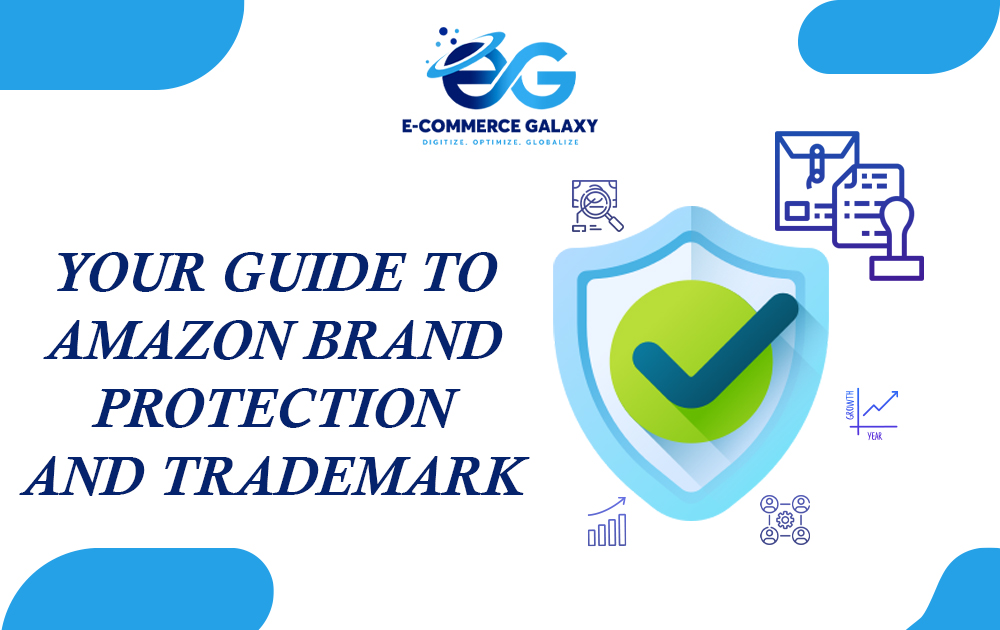If you manufacture or sell your brand and want to be an ace seller on Amazon, you must know why protecting your brand and trademark is important! If you don’t, let me walk you through it.
Being an Amazon seller comes with a lot of advantages, such as an enormous pool of purchasers, worldwide brand acknowledgment, simplicity of setting up your online store and the usage; the list goes on and on), however, there are shady vendors and sellers out there who would want to exploit your diligent effort. But don’t worry, we are listing down a handy checklist that might help you in the long run!
Watch out for these threats and know how to protect yourself from fraudulent activities!
Hijacked Listings
A listing gets hijacked when another vendor takes your ‘Buy Box’ away by selling a product that looks like yours, only it’s just a fake rendition.
In case this happens to you, you have a couple of choices
- Go to the product page of that specific seller and then select the “Ask a question” button. From there, send a ‘cease and desist letter’ to them illustrating how you’re the first proprietor of the product/listing and what they’re doing is against Amazon’s Terms of Service.
- Register a complaint with Amazon if you’re a brand-registered proprietor.
- Get in contact with a legal counselor, as they’ll know the point-by-point particulars of how to take the case forward legally.
Piggybacked Listings
Piggyback listing is closely related to what a hijacked listing is! A piggybacked listing is the place where vendors sell your real product (instead of a fake rendition).
Sadly, it’s practically difficult to tell just by taking a look at it, so your best strategy is to buy one and cautiously investigate it to check whether it is really yours.
While US law permits vendors to resell their product, Amazon’s TOS indicates that there can’t be copied listings for a similar ASIN thus your choices are a touch more restricted here. To deal with this threat and protect your listings, discover where they’re sourcing it from and try to break off the supply.
Copyright or Trademark Infringement
Copyright ordinarily relates to inventive works, similar to your logo, pictures, the packaging design of your product, and listings. When you make these works (as long as they’re unique), the copyright stays with you.
A trademark, then again, manages the actual organization (for example brand name, product names, slogans, and so on)
If you discover that someone has violated your copyright, follow similar steps as you would for hijacked listings (cease-and-desist letter, registering a complaint with Amazon either through Amazon Brand Registry or the encroachment infringement report).
The steps you ‘ll follow will be pretty much the same as you would for a trademark infringement, yet when you’re sending the cease-and-desist letter or rounding out the encroachment infringement form, assemble as much information as possible. Your achievement in winning relies upon you having the option to demonstrate you were the first proprietor/seller of that specific product.
Patent Infringement
While the above danger is managed with encroachments against creative and exclusive data, patents have to do with advancements or innovations and there are two primary sorts.
- Utility patents ensure the product’s utilization or activity. These patents are very specialized in nature, so they can be costly and may require a long effort to get.
- Configuration licenses ensure the thing’s appearance. These patents typically take less effort to get and are more reasonable, however, you need to demonstrate or prove some or all of the design is 100% unique.
You’ll need to manage patent encroachments a similar way you would for copyright and trademark (cease-and-desist letter, documenting a grievance with Amazon). The solitary distinction is an additional progression for utility licenses where you’ll be utilizing Amazon’s Patent Neutral Evaluation Service.
IP Infringement Claim
IP, or intellectual property, safeguards immaterial manifestations. It’s additionally a bit of an umbrella term that envelops patents, copyrights, trademarks, and so on, similar to trade mysteries or automated processes.
If you’ve come across a seller who’s made an IP claim against you that is falsified, these are the means to follow.
- Email the vendor (with the email address Amazon’s given you) and ask them (cordially!) to a layout which of their IP you’ve encroached. Remaining quiet, cool, and gathered is vital, as your objective is getting this settled — and rapidly.
- Then, get more subtleties from them. There might be an opportunity you really encroached on their IP, so get as much data as possible.
- Third, if their IP encroachment guarantee is unmerited, you’ll need to submit a counter DMCA notice with Amazon.
Fake Reviews
In spite of the fact that Amazon’s improved at sifting through dealers who flood others’ postings with counterfeit one-or five-star surveys, still, it’s a problem that is spinning out of control. An unmistakable method of recognizing counterfeit audits is if they don’t have the Verified identification; another is to check for a common language across listings as a method of seeing malicious reviews springing up.
Before you make any move, take screen captures of all reviews you believe are suspect. Time matters, and acting first before collecting enough evidence can obstruct your case, so find and screen capture as many reviews as you can.
For counterfeit audits, contact Seller Support and give them all the screen captures, and the details you collected.
Top Picks to Protect Your Brand
If the best safeguard is a solid offense, here are the top tips you can take in securing your brand before experiencing a threat.
- Put your logo all over, this includes the product as well as its packaging, so your copyright is covered by US law. This additionally makes it much harder for somebody to duplicate and take benefit off your work.
- Make sure you use Amazon-provided standardized identifications (FNSKU)
- Secure your account on Seller Central with a two-step check login.
- Consider utilizing an outsider application that will make you aware of conceivable suspicious or shady movement, such as changing your description or pictures.
- Document a conventional trademark for your image and logo.
- Join Amazon Brand Registry so your brand and work are indexed and can be identified back to you.
- Go above and beyond with Amazon Transparency, which allocates a remarkable and unmistakable scanner tag to your items.
- Make several strides in that direction with Amazon Project Zero, however for young sellers it’s an advanced step at this point. It serves like Transparency, yet it’s more built-up (you can self-eliminate postings all alone as opposed to trusting that Amazon will do it).
- In case you’re a part of Brand Registry, you can utilize brand gating on your brand or on explicit ASINs, which acts as a digital canal around your brand and products.
In a Nutshell
There is no 100% surefire way approach to secure your image on Amazon.
If your products are being sold well enough, the odds are there’s somebody with awful goals eyeballing your best spot.
Subsequent to developing so quickly, Amazon is easing back finding approaches to ensure dealers with programs like Transparency, Project Zero and Patent Neutral Evaluation and, given this push, ideally they’ll dispatch more shields later on.
In case you’re focused on building a brand, and utilizing Amazon as your sole or significant commercial center, you should reserve your image, joining Amazon’s Brand Registry and investigating which of their different projects you may be qualified for. Best of luck!




